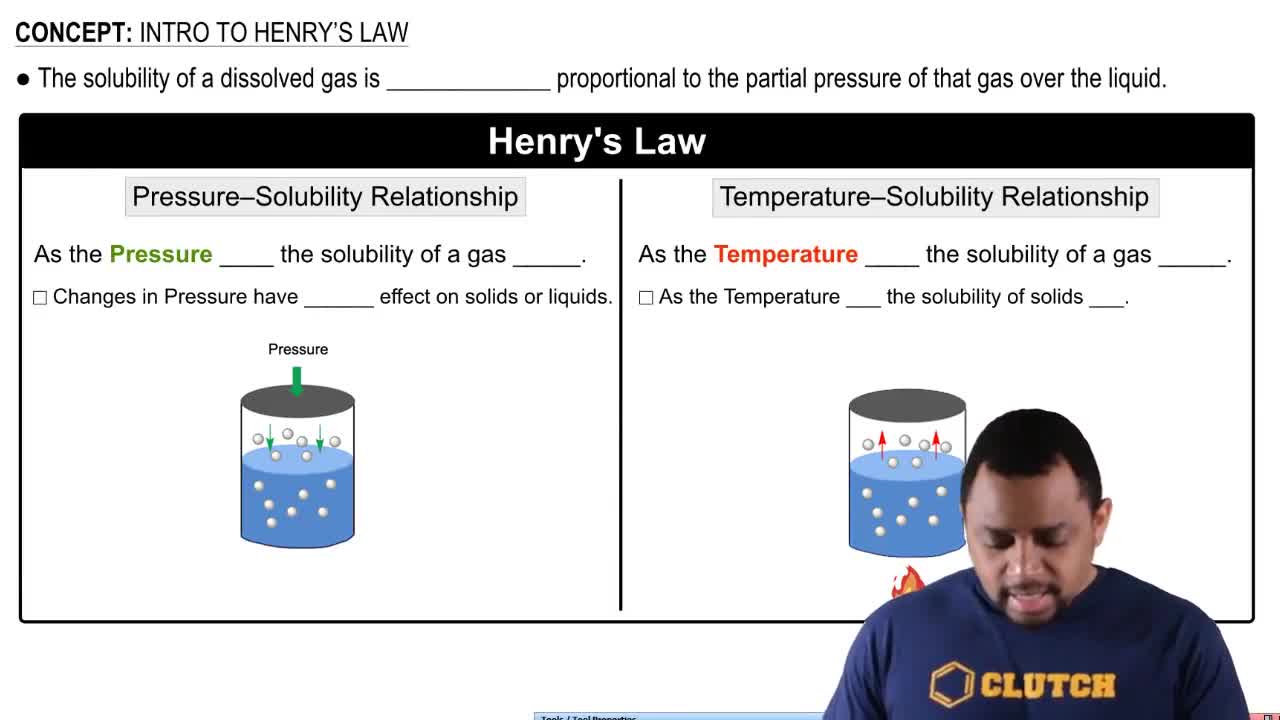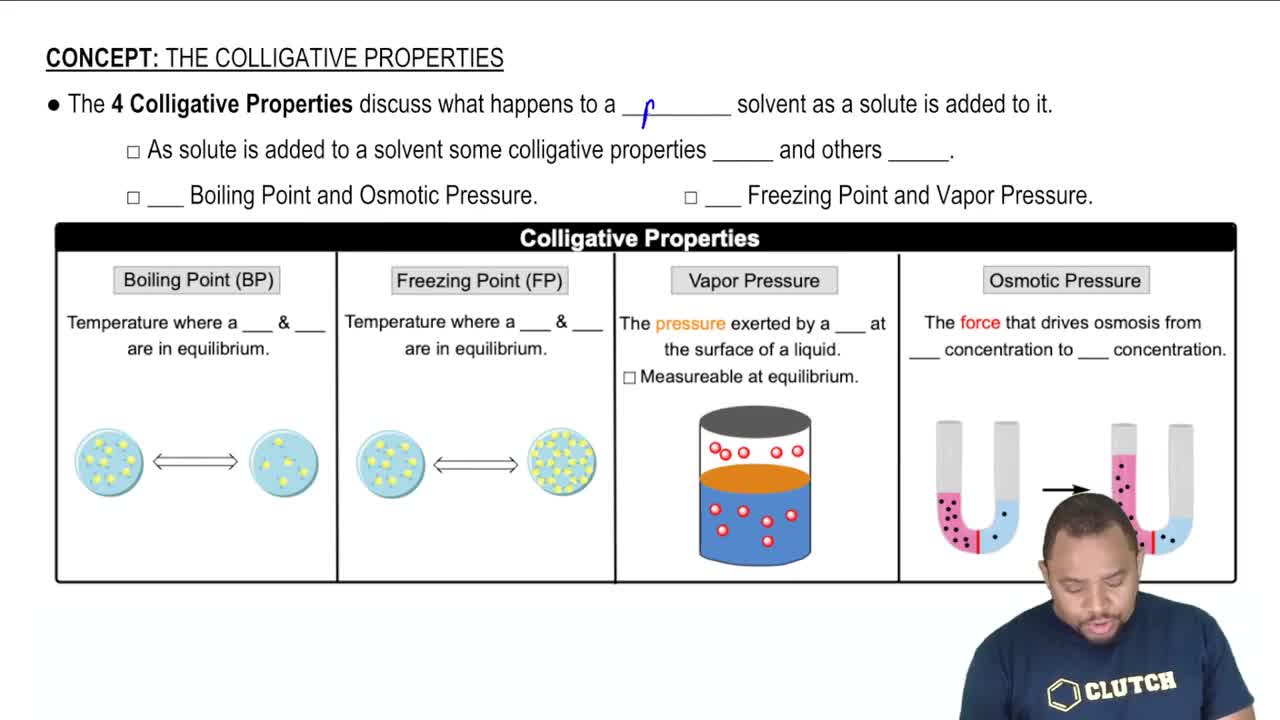By referring to Figure 13.15, determine the mass of each of the following salts required to form a saturated solution in 250 g of water at 30 °C: (c) Ce2(SO4)3.
Common laboratory solvents include acetone (CH3COCH3), methanol (CH3OH), toluene (C6H5CH3), and water. Which of these is the best solvent for nonpolar solutes?
 Verified step by step guidance
Verified step by step guidanceKey Concepts
Polarity of Solvents

Like Dissolves Like

Solvent Properties

Oil and water are immiscible. Which is the most likely reason? (a) Oil molecules are denser than water. (b) Oil molecules are composed mostly of carbon and hydrogen. (c) Oil molecules have higher molar masses than water. (d) Oil molecules have higher vapor pressures than water. (e) Oil molecules have higher boiling points than water.
Which of the following in each pair is likely to be more soluble in hexane, C6H14: (a) CCl4 or CaCl2, (b) benzene (C6H6) or glycerol, CH2(OH)CH(OH)CH2OH, (c) octanoic acid, CH3CH2CH2CH2CH2CH2CH2COOH, or acetic acid, CH3COOH? Explain your answer in each case.
Which of the following in each pair is likely to be more soluble in water: (a) cyclohexane (C6H12) or glucose (C6H12O6),
Which of the following in each pair is likely to be more soluble in water: (b) propionic acid (CH3CH2COOH) or sodium propionate (CH3CH2COONa)
